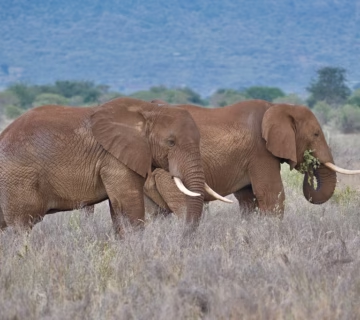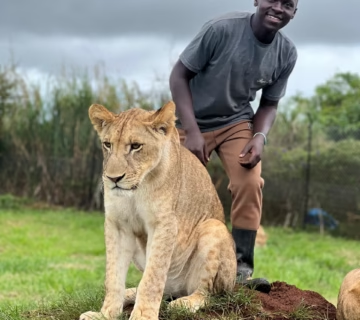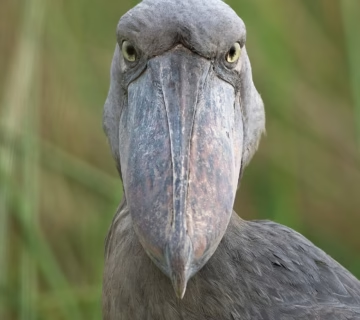Track lions; define lion tracking
More of a research is lion tracking. Tracking lions is closely observing them and learning about their behavior. Under the Uganda Wildlife Authority’s research department, a researcher allocated by the Uganda carnivore project tracks lions equipped with radio collars. With the radio collars, they track lion movement using the radiation trackers.
Learning much more about the behaviors of the king of the wild in natural plains of kasenyi with in the national park is the essence of lion tracking. Among the most fascinating experimental tourism projects in Uganda is lion tracking.
This is truly a hope giver; a source claimed to have seen fresh pride in Hamukungu where the 11 lions were poisoned dead on February 11, 2019. The pride consists in two lionesses and seven cabs. This totally refutes the myth that these tree climbing lions are extinct.
Charges for this experimental lion tracking activity at Queen Elizabeth National Park
For members of the East African Community, the expense of a lion permit approved by Uganda wildlife authority is US$50; for international visitors, it is UGX 100,000. On this sum US$10, the Uganda carnivores’ project in charge of lion preservation at Queen Elizabeth national park is funded for This charge covers Queen Elizabeth national park’s entrance cost as well.
Under research, a few individuals are let accompany the researcher to monitor the lions in the savannah plains within the park. The Uganda carnivores’ project (UCP) provides the researcher.
Only few people are let into a natural ecosystem. This means you have to reserve in advance to free a spot if you are going to join the team. This exercise lasts two to three days and just twice a day; in the morning at around eight and late afternoon.
WHY ARE THE LION TRACKING CALLED FOR LIMITED NUMBER OF PARTICIPANENTS NEEDED?
Unlike other game viewing activities, lion tracking is a research endeavour. Therefore, a restricted number of people are allowed to participate in the lion tracking in Queen Elizabeth national park in order for the research to proceed either for goals like gathering reliable information or for other reasons.
Another reason is not stressing the animals; many people can really stress lions in Queen Elizabeth national park since humans are not familiar with them. The eco system’s sustainability depends on this, so it is quite risky.
A limited quantity also enhances your experience during the lion tracking expedition. If you are few for the activity, everyone has an opportunity to obtain good shots. If at all possible, every participant has an opportunity to observe the lion before it runs away from a lot of commotion from the numerous eager visitors.
Last but not least, a small number of people are permitted for the lion tracking activity in Queen Elizabeth so enabling a well-informed knowledge of the lion habits and behaviors as revealed by the researcher.
How is lion tracking activity carried out in Queen Elizabeth National Park?
An amazing beginning for the lion tracking activities in Queen Elizabeth National Park is being time conscious. Technically, lion tracking should begin with waking up early in the morning at around 8am to track, monitor, and investigate about the king of the African jungle; African lions, with in the Mweya peninsular.
Researchers track lions by means of radio collars and radiation locators, therefore locating areas of concealment for the animals. The information gathered by the investigating team facilitates improved knowledge of the wildlife and conservation.
The lions live in groups ranging from three to twenty-five numbers; these are known as prides. But the lion count rises during the tracking operation. To prevent confusion, it is therefore best to save or record the first number observed.
The black mane of the male lions makes them look quite distinct from the lionesses. Though they struggle with the male to guard their cubs from being killed by the male of the pride, main lionesses lack manes; so, you should not under look them.
It’s important to pay attention to the several indicators pointing to the lions’ whereabouts. For instance, the hyenas laugh and any other distinctive disturbing cry for prey, as well as the intensity of the nighttime vocalizations—loud roars.
Also noteworthy on the plains are the bent grass. It could clarify the direction the lion has travelled. If you follow all this, you have a 95% probability of spotting lions at Queen Elizabeth national park on savannah plains.
Lion tracking: Lions stroll over the park
Are lions in Queen Elizabeth National Park different from any other lions in the world?
Since lions in Queen Elizabeth National Park are tree climbing lions, this is not a question that many people ask. How unique this is? Sloppily hanging in the branches of acacia trees and sycamore trees in the savannah plains of Queen Elizabeth national park, the lions in Ishasha sector seem lazy.
These lions are territorial; that is, they create territories and must abide by this norm otherwise the worst could occur between two males from separate prides. This is perhaps the reason they are known as the king of the jungle; two kings cannot control one realm.
Different methods of territory construction are used;
- About twenty-centimeter depth, the male massages its hind foot in the earth. Such a grave indication indicating that the proprietor of the mean territory behaves disrespectfully.
- To guard his area from being taken by another pride, the king continues urinating on the tree stems nearby.
- To indicate their territories, the male lions brush their mane in the shrubs. The mane of the male lion is black; the hair of the female lion is not like that.
As their methods of identifying territory above illustrate, the lions are indeed kings and conquerors. The male lions, in my opinion, are similarly nasty and avoid interruption.
Other activities you need to complement the main
- When you visit Queen Elizabeth National Park, you can never have enough to keep interesting. Queen Elizabeth National Park offers more activities worth enjoying. Among them are the following:
- Tracking chimpanzees in the Kyambura Gorge environment. Kyambura River supports a rain forest on top of it. Here you can admire the gorge’s landscape, learn about monkey ecology and also discover the habituated chimpanzee behavior.
- Another fascinating pastime you should not miss when visiting Kyambura Gorge is birding. The birding international has chosen Queen Elizabeth as a notable birdwatching area (IBA). Queen has more than 619 bird species. The forest environment of Uganda and Congo will enable you to observe and learn about both eastern and central African birds.
- Trekking and nature hikes through Mweya peninsular and Maramagambo forest will let you step outside that tour vehicle and stretch your legs while you savor the smells and sounds of the outdoors in Queen Elizabeth national park.
- The cultures of the surrounding towns might assist you in determining the quality of work done to protect the environment. Their handcrafted goods, created with great affection only for you, will also be much appreciated.
- Seeing the bats at a bat cave under Maramagambo woodland will also be interesting. From the Nyanzibiri cultural cave, you may view the pythons as they emerge to cool from the afternoon sun.
- Boat cruises around the Kazinga Channel will provide an opportunity to cool down with the breeze from the chilly sea.
- Along with the buffaloes wallowing in the mad on the canal, you will also be able to witness the hippos cooling off in the water. Here you can witness a range of animals; birds such as the magnificent fish eagle hanging from the dry tree limbs, keen to get its food.
- A three-hour exercise called mangoose tracking will teach you about the habits of these little animals. This is done on foot under the direction of a guide over the Mweya Peninsular Kazinga waterway.
- With all these activities, your experience will rise to its peak when you travel to Uganda, particularly to Queen Elizabeth
- National Park. For those who visit Bwindi impenetrable forest, Queen Elizabeth National Park should really be a must-see destination since it is only a short drive from there in the northern Buhoma region.
Track lions in Uganda
Monitoring Lions from Uganda
REACH QUEEN ELIZABETH NATIONAL PARK: HOW Easy?
Using air transportation will allow you to reach Queen Elizabeth national park in a few minutes. The park is reachable via three air strips—at Kasese, Ishasha, and Mweya. From the south, the park is reachable by road via Mbarara roughly 420km; from the north gate, you can approach the park via Fort Portal roughly 410km.
A traditional African safari should consist of a drive across the renowned Queen Elizabeth National Park for activities including hiking, birding, nature walks, but don’t forget a scientific experiential lion tracking in the southern Kasenyi and Ishasha sector.



